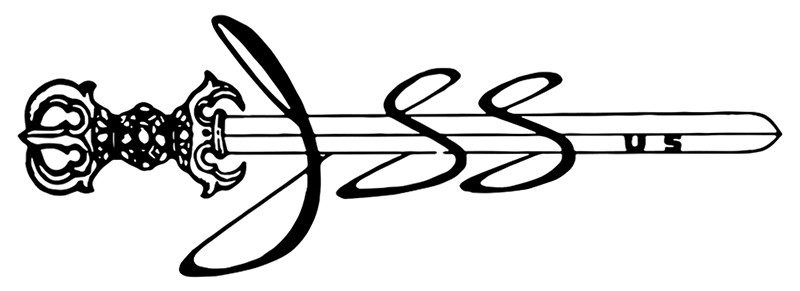
The articles on this page originally appeared in JSSUS newsletter Volume 8, no.1, 1969.
A BRIEF HISTORY OF KENDO by Benjamin H. Hazard, Jr- Page 45
A BRIEF HISTORY OF KENDO
by Benjamin H. Hazard, Jr.
Member of the Society
The use of the sword in Japan goes back into the mists of antiquity, when bronze swords of Chinese design were introduced from the Asiatic continent. In the middle of the seventh century, about 646, with the massive introduction of Chinese institutions, also came the technique of T’ang swordsmanship.
Emperor Kammu, when he moved the capital from Nagaoka in 794 to Heiankyo, modern Kyoto, had a practice hall for fencing erected within the palace precincts. Throughout the Heian period, which lasted from 794 to 1185, on the fifth day of the fifth lunar month, a date which in modern times has been fixed on May 5th, emperors commanded that sword exercises be held in the hall.
In the Kamakura period, 1192 to 1331, swordsmanship grew in importance, because the emerging military class domi- nated the government.
Through the Ashikaga period, 1336 to 1573, schools of fencing gradually evolved. The tempo increased from the end of the fifteenth century to the mid-sixteenth century, as Japan experienced a prolonged period of civil wars. Japanese learned to make firearms from the Portuguese and by the late sixteenth century firearms dominated the Japanese battlefields, but as the sword became less significant in battle it found a new esteem in training the mind and body.
In the Tokugawa period, 1600 to 1867, a period of general peace, after the first turbulent years of the establishment, a class system hardened with the samurai or warrior class at the top. Where, in the centuries immediately preceeding, anyone, no matter what his social station, could rise in status if he was a skilled swordsman, in the Tokugawa period training in Kendo was restricted to the samurai class. Ironically, in the period of peace Kendo reached its zenith with more than 200 schools; most of these schools sought their philosophical inspiration in Confucianism and Buddhism, especially Zen Buddhism. Training was in the form of Kata, that is, adversaries went through a series of exercises in predetermined cuts and parries with bare swords. Then less dangerous wooden swords were introduced. Sometime between 1751 and 1771 Nakanishi Chuzo of the Iho School and Naganuma Shirozaemon of the Jiki-Shinkage School devised masks, body armor and gauntlets, and substituted bamboo staves for swords. This permitted more realistic combat. Thus modern Kendo was born.
With the restoration of the Emperor to power in 1868, and the subsequent formation of a conscript army armed with rifles, the samurai class was legislated out of existance. Kendo went into a decline as legal act after legal act struck at the sword as a weapon. In 1871 sword wearing by samurai was made optional; in 1873 vendettas were forbidden. 1876 the wearing of the sword was prohibited, and in 1889 duels were forbidden.
The samurai of Satsuma went down to defeat in 1877 before the new conscript army. Their fight was so magnificent that the government pondered over the value of Kendo in developing a martial spirit. In 1895 the Butokkai, "Martial Virtue Society,” was established and Kendo was revived. In 1911 Kendo was included in the physical education of middle schools and Kendo flourished until World War II. After the war Kendo was forbidden by the Occupation, but in 1952 it was revived again and has flourished ever since.